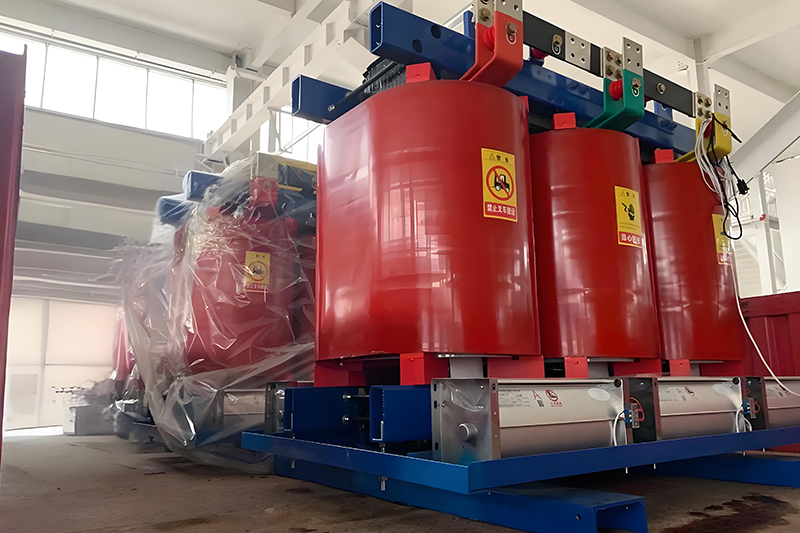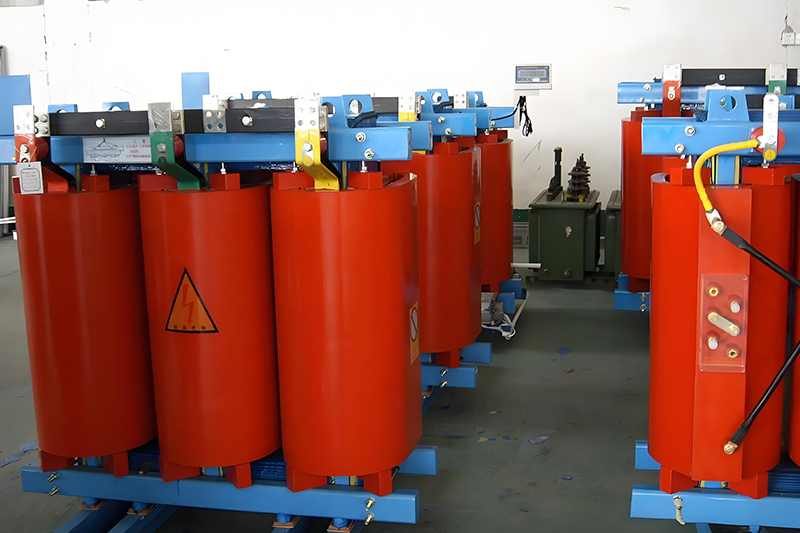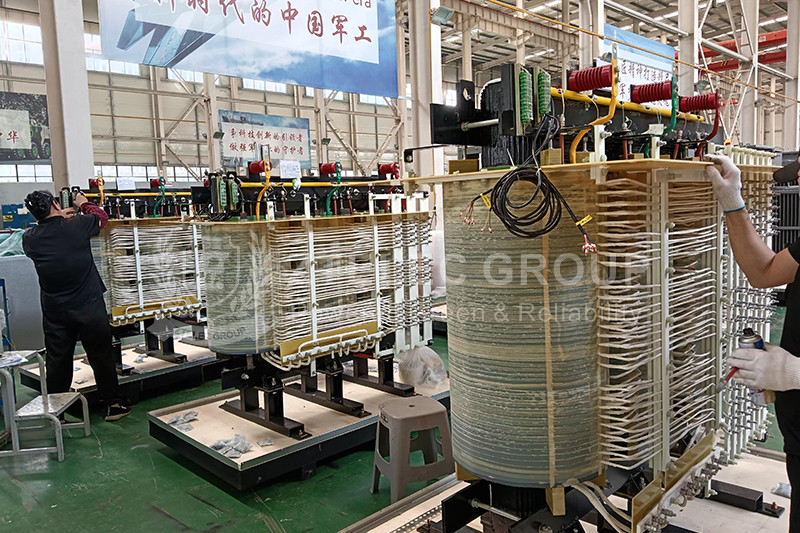Dry-Type Transformer Installation Guide: Key Considerations for Safe and Reliable Operation
In modern power systems, dry-type transformers are widely used due to their safety, low maintenance, and environmental advantages. However, the quality of installation directly impacts the transformer's operational stability and service life. This guide outlines essential precautions and procedures to follow during the installation process.

1. Installation Environment Requirements
1.1 Adequate Spatial Layout
Dry-type transformers require effective heat dissipation. Maintain at least 0.5 meters of clearance around the transformer to allow proper airflow. Insufficient spacing can lead to overheating and equipment trips. Real-world cases show a 60% reduction in faults after layout optimization.
1.2 Temperature and Humidity Control
The optimal operating temperature is -25°C to +40°C. Additional cooling systems may be required in extreme conditions. In humid areas, precautions must be taken to prevent condensation inside the equipment.
1.3 Protection Against Dust and Corrosion
In environments with metal dust or corrosive gases, transformers are prone to insulation failure or short circuits. Clean the cooling channels monthly and install protective covers when needed to block contaminants.
1.4 High-Altitude Adjustments
At altitudes above 2,000 meters, transformer cooling efficiency declines by roughly 10% per 1,000 meters. In such areas, reduce capacity by 15–20% based on the manufacturer’s guidelines to ensure reliable performance.
2. Foundation Preparation and Equipment Inspection
2.1 Stable Foundation
The foundation must be level, solid, and capable of supporting the full transformer weight. For indoor or floor-mounted setups, assess the floor's load-bearing capacity. Use anti-vibration pads or shock-proof brackets to reduce operational stress.
2.2 Pre-Installation Equipment Checks
Verify that the transformer's model and specifications match the design drawings. Check for physical damage, rust, or missing components. Conduct an insulation resistance test with the following standards: - High-voltage to low-voltage and ground: ≥300 MΩ - Low-voltage to ground: ≥100 MΩ
3. Installation Process
3.1 Safe Handling and Lifting
Use lifting rings or forklifts for safe handling. Do not lift from the coil or core. During lifting, keep the tilt angle below 15° to prevent internal damage.
3.2 Precise Positioning and Fixing
Install the transformer horizontally with an error tolerance of ±2 mm/m. Tighten bolts securely and apply anti-loosening washers to prevent loosening due to vibration.
3.3 Electrical Connection Guidelines
Use copper bars or cables with flat, tinned contact surfaces. Follow torque specifications during bolt tightening. Avoid stress on low-voltage terminals. Ensure proper grounding of the core, shell, and neutral point with resistance ≤4Ω.
3.4 Install Temperature Control Devices
Install a temperature controller with appropriate alarm and trip thresholds. If an air-cooling system is included, confirm correct fan operation and automatic start-stop functionality.
4. Post-Installation Testing and Commissioning
4.1 Insulation and Voltage Testing
After installation, recheck insulation resistance and compare it to pre-installation values. Perform power frequency withstand voltage tests: - High-voltage side: 35 kV for 1 minute - Low-voltage side: 3 kV for 1 minute
4.2 No-Load Operation Test
Check phase sequence before energizing. After power-on, monitor noise, vibration, and no-load current (should be 2–6% of rated current). Ensure temperature rise meets design limits.
4.3 Load Operation Test
Gradually apply load up to full capacity. Confirm three-phase voltage balance within ±5%. Monitor winding temperature rise (≤100K) and core temperature rise (≤80K). Check if the cooling system responds correctly.
5. Ongoing Maintenance and Safety
5.1 Safety Signage and Access Control
Install warning signs or fences to prevent unauthorized access. Always use insulated tools and wear protective gear during maintenance.
5.2 Routine Maintenance
Clean dust from transformer surfaces every 3–6 months. Inspect fasteners and verify the accuracy of temperature controllers. Avoid any welding operations above the transformer.
5.3 Responding to Abnormal Conditions
If noise, smell, or overheating is detected, shut down the transformer and inspect immediately. For transformers restarted after long-term shutdown, retest insulation and dry components if necessary.
Proper installation and maintenance of dry-type transformers are essential to achieving long-term stability, safety, and energy efficiency. By following industry best practices and adapting to environmental conditions, installers can prevent faults, extend service life, and ensure reliable power delivery across various applications.
- more+releated article
- 2025-10-21Application of K Factor Transformer
- 2025-10-21Detailed explanation about transformer model w
- 2025-10-2010kV Oil-Immersed Transformer Safety: Lightnin
- 2025-10-20What are The Advantages of Phenolic Cotton Clo
- 2025-10-17Are Three-Phase Isolation Dry-Type Transformer
- 2025-10-17G10 Epoxy Sheet: Choosing the Right Specificat
- 2025-10-1610kV Oil-Immersed Transformer Operation Inspec
- 2025-10-163240-B Epoxy Phenolic Glass Fiber Cloth Lamina
- 2025-10-15G10 Epoxy Sheet: The Preferred Insulation Mate
- 2025-10-15Analysis of Energy-Saving and Noise Control Te






